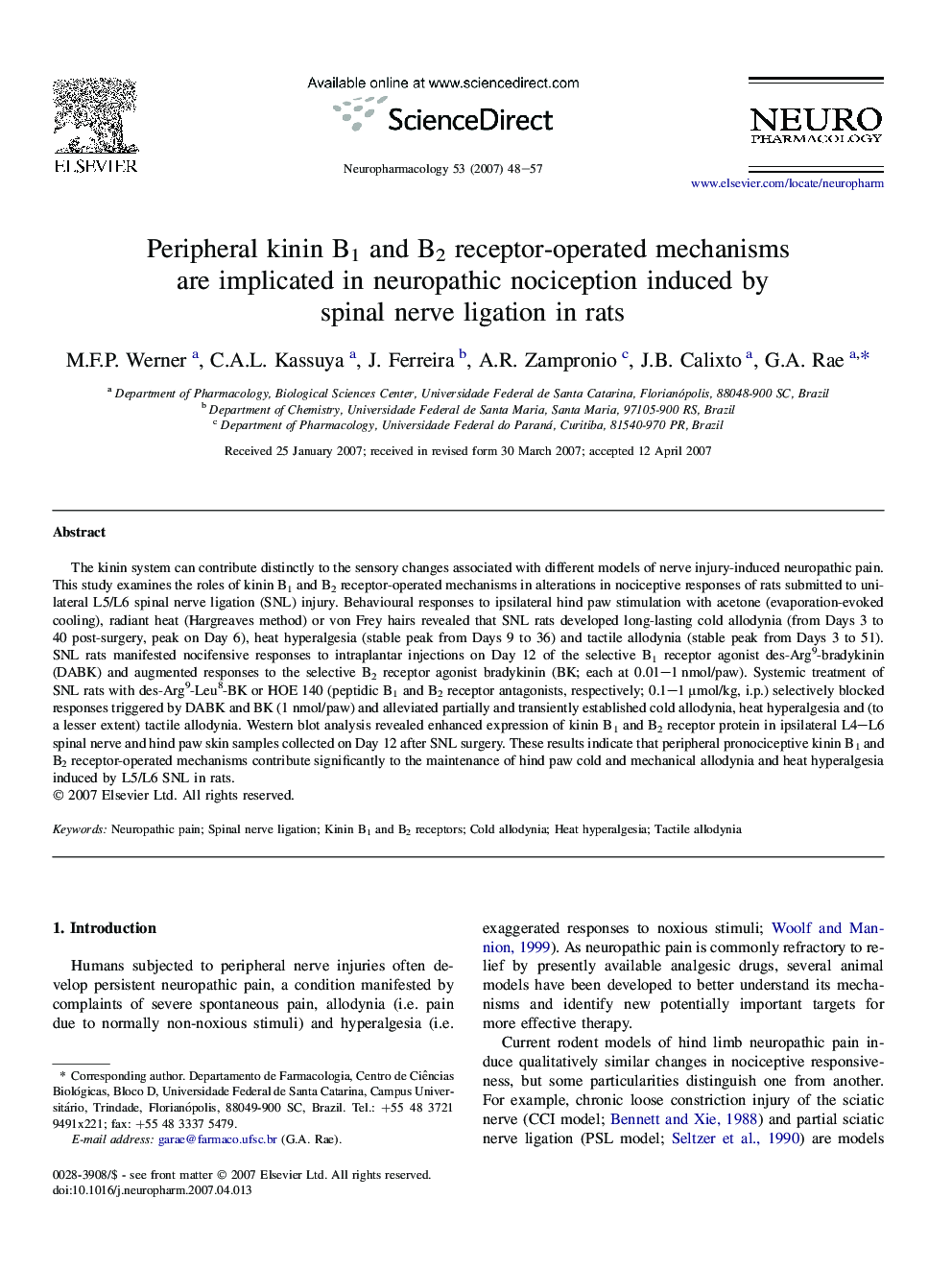| Article ID | Journal | Published Year | Pages | File Type |
|---|---|---|---|---|
| 2495159 | Neuropharmacology | 2007 | 10 Pages |
The kinin system can contribute distinctly to the sensory changes associated with different models of nerve injury-induced neuropathic pain. This study examines the roles of kinin B1 and B2 receptor-operated mechanisms in alterations in nociceptive responses of rats submitted to unilateral L5/L6 spinal nerve ligation (SNL) injury. Behavioural responses to ipsilateral hind paw stimulation with acetone (evaporation-evoked cooling), radiant heat (Hargreaves method) or von Frey hairs revealed that SNL rats developed long-lasting cold allodynia (from Days 3 to 40 post-surgery, peak on Day 6), heat hyperalgesia (stable peak from Days 9 to 36) and tactile allodynia (stable peak from Days 3 to 51). SNL rats manifested nocifensive responses to intraplantar injections on Day 12 of the selective B1 receptor agonist des-Arg9-bradykinin (DABK) and augmented responses to the selective B2 receptor agonist bradykinin (BK; each at 0.01–1 nmol/paw). Systemic treatment of SNL rats with des-Arg9-Leu8-BK or HOE 140 (peptidic B1 and B2 receptor antagonists, respectively; 0.1–1 μmol/kg, i.p.) selectively blocked responses triggered by DABK and BK (1 nmol/paw) and alleviated partially and transiently established cold allodynia, heat hyperalgesia and (to a lesser extent) tactile allodynia. Western blot analysis revealed enhanced expression of kinin B1 and B2 receptor protein in ipsilateral L4–L6 spinal nerve and hind paw skin samples collected on Day 12 after SNL surgery. These results indicate that peripheral pronociceptive kinin B1 and B2 receptor-operated mechanisms contribute significantly to the maintenance of hind paw cold and mechanical allodynia and heat hyperalgesia induced by L5/L6 SNL in rats.
